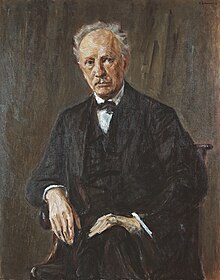October 25 and 26 were spectacular nights of music. Nights of what George Gershwin called “our undiluted national pep.” The San Francisco Symphony’s program included Suite from Candide, by Leonard Bernstein; Rhapsody in Blue, by George Gershwin (orch. Ferde Grofe); Wood Notes, by William Grant Still; and Porgy and Bess, A Symphonic Picture, by George Gershwin (arr. Robert Russell Bennett). Each piece was thrilling and innovative. Each one came out of a different decade: Candide, written in 1956 (arr. Charlie Harmon 1998); Rhapsody in Blue, composed in 1924 (rev. 1926); Wood Notes, composed in 1947; Porgy and Bess, A Symphonic Picture, written in 1935 (arr. 1943).
 The pianist for Rhapsody in Blue was Michelle Cann. She is an astounding soloist who gave us all the rhythm, excitement, and gorgeous music possible in this heroic composition.
The pianist for Rhapsody in Blue was Michelle Cann. She is an astounding soloist who gave us all the rhythm, excitement, and gorgeous music possible in this heroic composition.
 The conductor was Thomas Wilkins. In addition to being handsome with an elegant presence, he absolutely kept the SF Symphony at their best throughout the concert. It is easy to visualize each composer nodding his head in gratitude for Maestro Wilkins’ loyalty to exactly what each one wanted his music to be. A conductor par excellence: the principal conductor at the Hollywood Bowl, artistic advisor to the Boston Symphony, principal guest conductor of the Virginia Symphony, and the Henry A. Upper Chair of orchestral conducting at Indiana. There is more. He was the director of the Omaha Symphony until 2021. And more. We hope the SFS will bring him back soon.
The conductor was Thomas Wilkins. In addition to being handsome with an elegant presence, he absolutely kept the SF Symphony at their best throughout the concert. It is easy to visualize each composer nodding his head in gratitude for Maestro Wilkins’ loyalty to exactly what each one wanted his music to be. A conductor par excellence: the principal conductor at the Hollywood Bowl, artistic advisor to the Boston Symphony, principal guest conductor of the Virginia Symphony, and the Henry A. Upper Chair of orchestral conducting at Indiana. There is more. He was the director of the Omaha Symphony until 2021. And more. We hope the SFS will bring him back soon.
 Leonard Bernstein, composer, (1918 – 1990)
Leonard Bernstein, composer, (1918 – 1990)
Bernstein must have studied Voltaire’s 18th century book or at least knew what it was about. There was a popular philosophy at that time that this is “the best of all possible worlds.” Candide was a young man who was relentlessly optimistic. His reward was being beat up by a huge flood and mean humans. Since it was an operetta, I have wondered why I had only heard a section of the music on the radio but not a single lyric. The Broadway show was a flop. A major problem was the lyrics. The playwright, Lilian Hellman, was the source of the concept, but it did not work. When it was being written, the McCarthyism of the early 1950s cast a long and scary shadow. Other outstanding authors contributed lyrics for the songs. It died by Hellman’s seriousness. Bernstein thought he would have a comic operetta. After years, one could applaud Bernstein’s optimism and determination. Candide came back to life in 1973 with new librettist and director. Bernstein himself created a concert version of his Candide. The music is 100% Bernstein: touching, satirical, rhythmically complex, with salutes to the international dance styles of Tango and waltz. It has jazz bones and tips its hat to moments of Rossini, Gounod (which I did not hear), and Gilbert and Sullivan. I am eager to hear the whole operetta.
Rhapsody in Blue. A few years ago, Rhapsody in Blue won as the number one most favorite music when SF’s classical music station ran its California play list competition. Oh, there was a lot of complaining: Why not Beethoven’s 5th? Why not Beethoven’s 9th? Why this beloved American music which is still exciting and fascinating? It is now celebrating its 100th anniversary. It is possible that Beethoven’s 5th and 9th supporters duked it out and that led them out of the top. It is also possible that the Rhapsody in Blue will thrill you and move you each time you hear it. In about 7th or 8th grade my friend Michelle and I would sit in my parents’ den and listen to that music. I realized on Oct. 26, that I probably had never heard it live. Definitely be there in person next time there is an opportunity. There is so much life in the music. I waited for that sliding clarinet glissando that gave me a chill down my back at the same time it gave me a feeling that the music was not describing sitting quietly. Gershwin said that while on a train the music came to him. “And there I suddenly heard — and even saw on paper — the complete construction of the Rhapsody, from beginning to end…. I heard it as a sort of musical kaleidoscope of America – of our vast melting pot, of our unduplicated national pep, of our blues, our metropolitan madness.” It is exactly all of that. There is not a moment when one loses interest. I was eager to know what was next, how the music went from one sensation to another. Michelle Cann just owned the Rhapsody. From the moment she appeared at the piano, took hold of her translucent, yellow, floor length cape, and flicked it over her shoulders to let it drape over the piano bench everyone in the full house had glued their eyes on Ms Cann. The dress was great, the playing was powerful and full of the Rhapsody music. The audience would not stop applauding and shouting. Ms Cann rewarded us with an encore: Rachmaninoff’s Prelude in C-sharp minor – that’s how it started – and then she played it in Hazel Scott’s jazz improvisation on that piece. It was dazzling. Thank you, Georgiana Du, for telling me it was Hazel Scott’s improv.
 William Grant Still, composer, (1895 – 1978)
William Grant Still, composer, (1895 – 1978)
William Grant Still did not take lessons to play a violin until he was 14 years old. He then taught himself the viola, ‘cello, double bass, clarinet, oboe, and saxophone. He attended Wilberforce University, and while there he directed the band. From there he attended the Oberlin Conservatory. He had received a scholarship, but he had to leave for military service in the Navy. After that, he was a sideman for W.C. Handy who took him onward to Memphis and New York. He never wasted time; somehow he also studied with Edgard Varese, the avant garde composer. Wood Notes is thrilling in its own way. It is tranquil but moving. The first movement , Singing River, lets the listener see and feel the river. Slightly, it meanders and the onlooker feels as though part of the river. The music focuses on strings and muted trumpets. Floating and still in motion, this first movement musically lets one know what a river is. The second movement, Autumn Night is a storm, but a gentle storm. There is enough wind to make the tree limbs sway back and forth, but not enough to bother anyone. It is like spending a night outside. There is a breeze and some rain to remind one that there is weather that can be a soothing story. Moon Dusk stars an oboe solo and more strings. The instruments are beautiful in their balance. Balance is an essence in the entire work. It ends with Whippoorwill’s Shoes. Syncopated rhythms and quick changes of the melodies make a surprising scene jump and dance. It is a bit of folk music, but not entirely. William Grant Still gives us a peaceful scene but that does not mean its music is immobile. It touches natural gifts. Still wrote more than 150 works, including 8 operas, and 5 symphonies. He was the first African American to write a symphony that was performed by a major orchestra and first to conduct a major orchestra. This was the first performance of Wood Notes by the SF Symphony. In program notes for Wood Notes’ premiere at the Chicago Symphony with Artur Rodzinski, Still declares his position: “Wood Notes has a social significance because it is a collaboration between a Southern white man and a Southern-born Negro composer, in which both of the participants were enthused over the project.” He dedicated Wood Notes to Friedrich J. Lehmann, his composition professor at Oberlin.
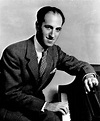 George Gershwin, composer, (1898 – 1937)
George Gershwin, composer, (1898 – 1937)
The opera, Porgy and Bess, Gershwin described as an “American folk opera.” It was based on a novel by DuBose Heyward. Heyward became the librettist. Ira Gershwin, the endlessly original lyricist for his brother’s songs, supplied some of the lyrics for this opera. George Gershwin moved to an island off of Charlestown, South Carolina, to write in order to keep the accent of the place. Gershwin and DuBose insisted that all the major roles would be filled by African American actors/singers. The opera opens with “Summertime,” considered to be the most recognizable tune in all of 20th century music theater. The story is about a tragic love between Porgy, a disabled, impoverished, and good hearted man; Bess, an abused woman who was addicted to cocaine; and Crown, a violent dockworker who drops her when he murders a man and decides to run. Bess begs Porgy to protect her, but when Crown returns to take Bess with him, Porgy kills Crown. Then, Bess goes to New York with Sporting Life, a dope dealer. Ever true to his love, Porgy follows them to New York. Five years after George Gershwin’s death, Robert Russell Bennett, a friend and colleague to Gershwin, arranged a medley of Porgy and Bess music for the Pittsburgh Symphony’s conductor, Fritz Reiner. As I listened to the “Symphonic Picture,” I felt the deep emotion and pain painted by the music. Even the satirical “It Ain’t Necessarily So,” sung by Sporting Life, has a heart full of blues. There are various commentaries about a white composer writing about a community of African Americans. I feel that Gershwin wanted to include not only the actors/singers but their community. The opera Carmen, focused on impoverished women and bullfighters, was written by a Frenchman. Curiously, Gershwin was thrown to the hungry lions on at least two sides. Writers of the ’20s and ’30s called him an ape from the jungles and denigrated his music; to them it was jazz, music from Africa. In addition to the antisemitism targeted at him, the bigots against African Americans added him to their list of hatreds. To them, he was just another low life African American. Gershwin died young, only 39. His music? It will not die.
 Rafael Payare, conductor
Rafael Payare, conductor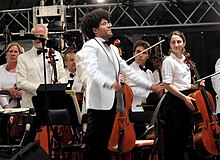
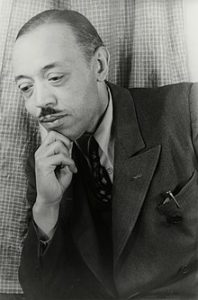 William Grant Still
William Grant Still
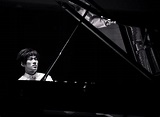

 Richard S
Richard S